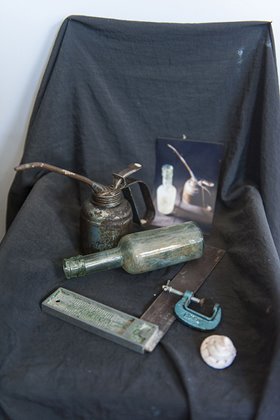 Employment in the Arts in Western Australia
Employment in the Arts in Western Australia
7 November 2017
Access to paid opportunities for visual artists in Western Australia is a vital issue for Artsource. The work environment for artists is part of a wider cultural industries sector, but the most important indicator for professional visual artists is the opportunity to work as creative producers. To gain an accurate understanding of the current arts production climate, a return to gathering comprehensive data is essential.
On Tuesday 31 October 2017 the Minister for Culture and the Arts, the Honourable David Templeman released the welcome news that arts and sports industries are the fastest growing jobs sector in WA, and that the McGowan Government will continue to invest in the cultural industries. The Minister noted that:
WA's creative industries can play a strong part in providing jobs, building our economy and creating more vibrant communities. These sectors can also provide further jobs and growth through related activities such as arts tourism, hospitality and festivals and events[i]
The recent statistics come from the ABS[ii] census in 2016 which shows that the Arts and Recreational Services Industry in Western Australia has grown by 25% since 2011. However, while potentially showing a positive trend, it needs to be noted that this statistic, besides combining jobs in sports with arts ‘services’, applies to a total of just 18,475 people in 2016 or only 1.5% of the labour force in WA.
In fact, current statistics for the arts labor force in Australia are hard to come by and difficult to interpret. As NAVA point out on their website[iii], the Australian Bureau of Statistics (ABS) disbanded its National Centre for Culture and Recreation Statistics in 2014, removing the means for gathering comprehensive national data on both arts participation and employment.
The last set of comprehensive figures for arts employment in WA were drawn from the 2011 census and published in 2013 by the Department of Culture and the Arts (WA) in a report called Creative Industries Statistical Analysis for Western Australia [iv]. This showed that in 2011 the creative workforce of WA represented 3.76% of the total workforce but that the occupations were distributed over a range of segments with 70% being in the creative services area rather than the creative production, so architecture, design and software and digital content, rather than visual art, musical and performance production. The creative services segment had experienced strong employment growth for the period 2006 to 2011 but employment in the creative production segment had declined slightly, consistent with other states for the same period.
Additionally, for professional visual artists, the remuneration in their sector had already been shown to be low in work carried out by academics at Macquarie University in 2010[v] and presumably has not improved significantly, given the low growth.
This continuing trend is summarised for the visual arts in WA in the more recent DCA report Present State [vi](2016) p1: There appears to be fewer exhibitions for audiences to attend and fewer opportunities to purchase work, which has the corollary of a negative impact on artist and gallery incomes and artist employment. Employment in the visual arts is in a period of transition, with lower than relative average annual growth. This marks the beginning of a potential vicious circle for the sector.
Despite the overall picture of low jobs growth and equally low income levels for artists, the 2011 statistics for WA also showed that while the bulk of the creative services were based in the Perth metro area (89%): A comparatively high proportion of the state’s jobs in the cultural production segments (17%) are located in non-metropolitan Western Australia, their more dispersed nature emphasising the importance of the cultural activities to local community wellbeing and economic development.
It goes on: In this sense, industries like music, visual and performing arts, despite their relatively small size in employment terms, are critical for promoting a vibrant culture and engaging lifestyle, helping define Western Australia as a place where people want to live. For this reason, the arts – at the grassroots level – need to be supported and encouraged to develop as a critical component of WA’s ‘enabling infrastructure’, in support of economic and community development[vii].
Arts funding has been spared the cuts made to other areas of Labor government spend but it is a worrying sign that due to the LotteryWest income declining by 7%[viii] there has been $16m less available for ‘community contribution’ in the last year. The fundraising environment also remains tough, and engagement stats are down although public sentiment about the arts is increasingly positive. A positive sign has been the inclusion of ‘cultural planning’ at the WA Local Government Convention in August[ix] this year, since without advocacy and commitment from local government chances of support for the sector at its ‘grassroots’ are slim.
Artsource is hopeful that the arts will increasingly be seen as critical and future arts specific data will reflect real growth in income and employment for cultural producers who live in Western Australia and not just the ancillary arts services.
Let’s cherish our creative resources and properly invest in them now
Henry Boston, Executive Director, Chamber of Arts and Culture WA [ix]